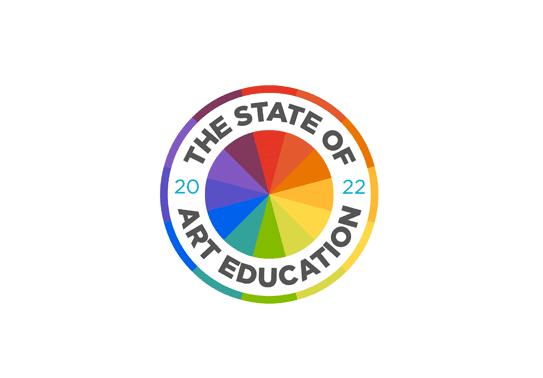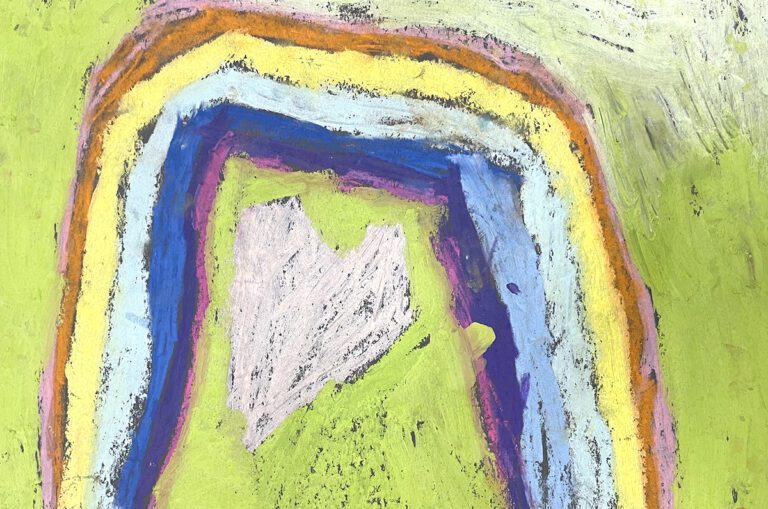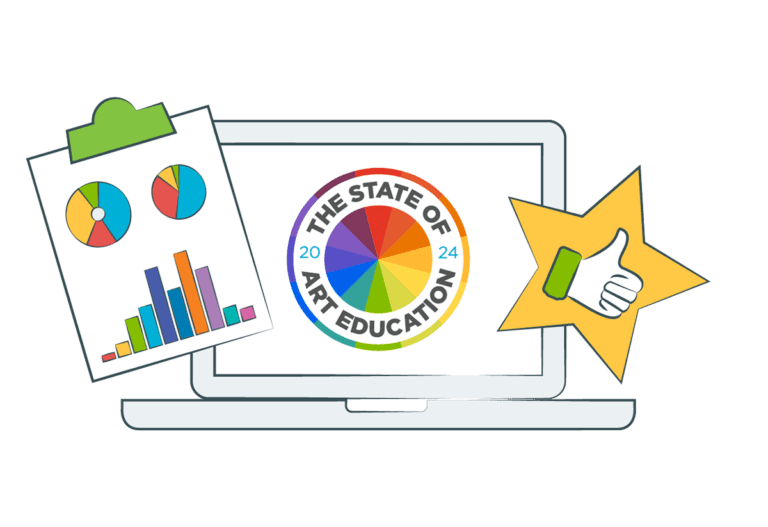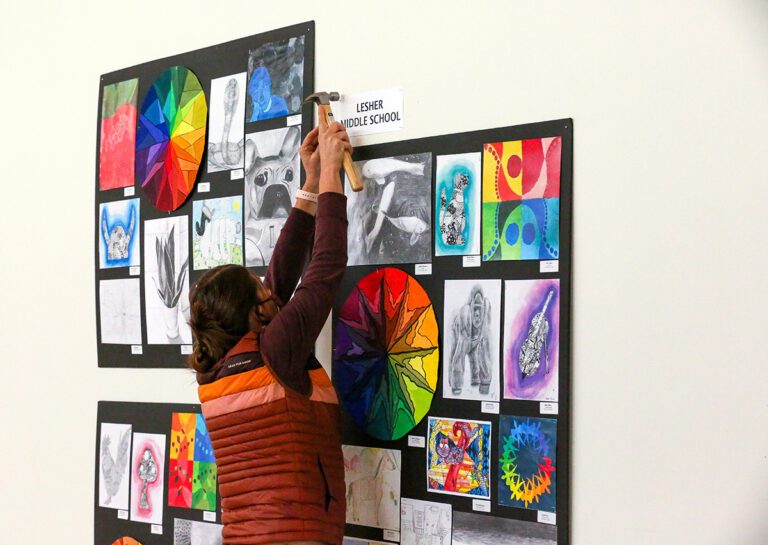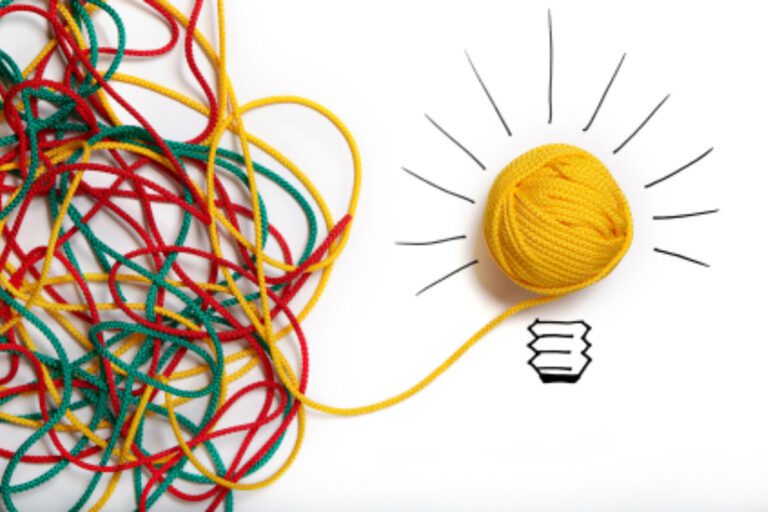The past four years of AOEU’s State of Art Education survey have brought a lot of insight from thousands of art teachers across the country (2021, 2020, 2019, 2018). Data collected included the basics, such as our demographics, whereas some questions went more in-depth. This information shares with us what you want and need right now. For those of you who took the valuable few minutes to fill out our survey instead of grading a pile of artworks, using the bathroom in between classes, or eating your lunch—thank you. We use your feedback to create and curate the specific and relevant articles, videos, podcasts, lessons, and more that will meet you where you’re at, help prepare you to be the strongest art teacher you can be, and enable you to champion your program.
Keep reading for ten key takeaways (packed with resources that you asked for!) from our most recent survey to learn more about art educators across the board.
Download the full report for a deeper dive!
Download Now!
1. We are back to normal! (But are we really?)
This school year brought high hopes that things would be “back to normal.” While the majority of us (88%, to be exact) are back in our classrooms with traditional, in-person learning, we all know that things are still far from normal!


2. We work well with others and are team players.
We teach our students that collaboration fosters key skills, such as communication, respect, and time management, just to name a few. Our students are fortunate to learn from amazing art teachers that set the example! 61% of art teachers are doing cross-curricular work with colleagues. Not only does it grow us, but it benefits our students too.
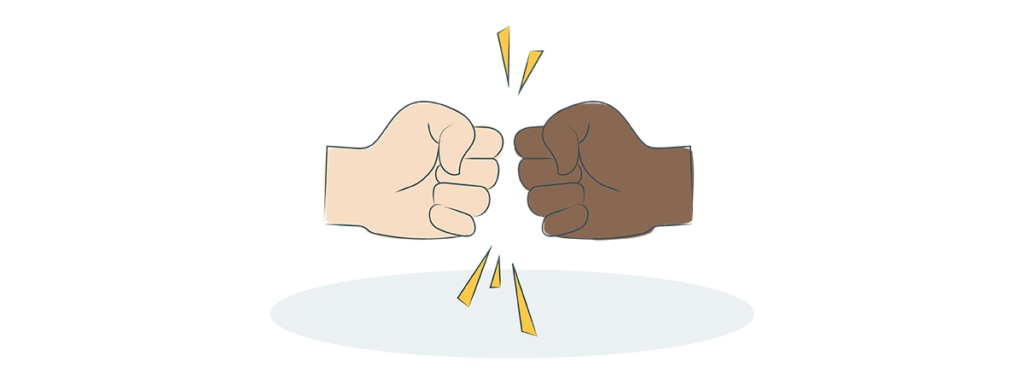

For more on Arts Integration and how to incorporate it into your school, take a look at the following:
- What Is Arts Integration and How Is It Beneficial to My Program?
- Arts Integration: How Art Increases Academic Capacity
- When You Want to Try Arts Integration (Ep. 161)
- How to Talk to Your Staff About the Power of Art
- Cross-Curricular Connections at the Elementary Level in PRO Learning
3. We love having the freedom to come up with our own lessons and resources, but we need more time!
Creativity is our expertise, and many of us enjoy tapping into it when ideating engaging lessons and composing helpful resources. The vast majority of us are fortunate enough to have say and control in what we teach. Approximately three out of four art teachers make their own curriculum resources. Despite the freedom, we still do our due diligence and ensure our lessons align with NCAS standards, state standards, or district/school mandated standards.
Unfortunately for more than half of us, our creativity is capped by our 45-minute prep periods (or less) each day. 61% of art teachers share that a lack of time is the biggest struggle in doing their jobs well. Many teachers have discovered that using teacher-made resources online not only supports other art educators but also means they don’t have to reinvent the wheel.


If you are looking for another place to get art teacher-created resources, we have tons of complimentary downloads in our articles as well as videos, podcasts, and lesson plans.
Additionally, many school districts across the country have purchased FLEX Curriculum for their entire visual arts team. Explore the FLEX Curriculum library to view thousands of time-saving curriculum resources that are aligned to national and state standards.
Learn more about the National Core Arts Standards here:
- Exploring the National Standards: Create (Ep. 206)
- Exploring the National Standards: Respond (Ep. 207)
- Exploring the National Standards: Connect (Ep. 208)
- Exploring the National Standards: Present (Ep. 209)
Portions of this work are based on the National Core Arts Standards. Used with permission. National Coalition for Core Arts Standards (2015) National Core Arts Standards. Rights Administered by the State Education Agency Directors of Arts Education. Dover, DE, www.nationalartsstandards.org all rights reserved.
NCAS does not endorse or promote any goods or services offered by the Art of Education University.
4. We need more administrative support, including relevant professional development.
When was your last school or district PD that was helpful to you as an art teacher? If you are stumped for an answer, you are not alone! Half of the art teachers who responded think their PD could use a little improvement with a dose of art ed relevancy.
This feedback goes hand-in-hand with the 41% of us who feel a lack of respect as art educators. If you think you are not being shown the same respect as general classroom teachers or other core content areas, it is time to advocate for the arts, your jobs, and your programs! When we show administration how valuable our program is, we can better champion our specific PD needs.
If you are not familiar with PRO Learning, here are five ways these on-demand short videos and corresponding resources are different from your typical professional development. If you are interested in finding out how your district can provide this for you, check out this article and fill out this form for a custom PRO presentation for your district.


Here are additional resources so you can make the most of your PD:
- Planning In-Person Professional Development in PRO Learning
- Providing Personalized Professional Development in PRO Learning
- Making the Most of Your PLC in PRO Learning
- 10 Ways to Equip and Empower Your Art Department
- 5 Ways to Make the Most of Any PD Experience
- Finding Time for Better Professional Development (Ep. 184)
5. We are struggling with behavior management across the board.
Coming out of isolation and quarantines, this year has been a rough one for classroom management! Half of the art teachers who responded reported that behavior management is a challenge. And no wonder—solid classroom management is based on a strong rapport with students. What do we expect when students have not been in a physical classroom with their teacher (or each other) for the past two years?


For strategies to foster positive relationships with your students, take a look at these links:
- Learn How to Play Teachers vs. Students—A Fun Classroom Management Game
- Connecting With Secondary Students
- 5 Classroom Management Truths Every Middle School Art Teacher Should Know
- Building Positive Relationships
- 6 Classroom Management Strategies to Prompt Social-Emotional Learning
- Managing the Art Room
6. We are getting burned out faster than usual.
There are so many extra responsibilities on teachers’ shoulders this year. Excessive absences for students and teachers mean more prep work, slower pacing, and a ton more coverage and duty assignments. This often leaves very little time left for us to do our job in the first place! The stats corroborate this. Over half of the art teachers said that they now face burnout at least once a week, compared to 29% of teachers last year.


Get some self-care ideas with these reads:
- 7 Tips to Help You Set Boundaries in the Art Room With Confidence
- Why Is It Important to Prioritize Yourself During the School Day?
- Curbing Art Teacher Burnout
- How to Start the Second Semester Strong: Accept It, Change It, or Leave It
- How to Create a Morning Routine to Beat the Pandemic Blues
7. We continue to stretch our budgets in the most innovative ways!
Even though the data showed an increase (from roughly $1,800 to $1,900) in our budgets this year, we all know that, when spread across our average of 346 students, it comes to less than $6 per student. That’s nothing! Art teachers have stepped up to the challenge of stretching funds and materials in the most unconventional ways with entire lessons made from cardboard, old electronics, clever supply hacks, and donations from the community.


8. We are still experts at two-dimensional art.
When it comes to drawing and painting, 90% of us are hands-down confident and comfortable. While it is common to have a favorite medium or medium of expertise, as art teachers, we want to strive to be proficient in as many mediums and techniques as possible. In doing so, we can be better equipped to introduce them to our students!
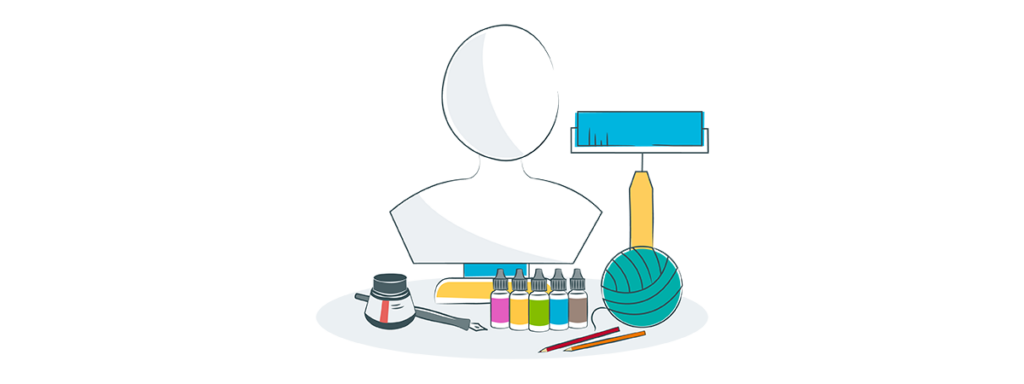

While the data is similar to last year, we heard you, and we created even more resources to equip you in your most desired areas: digital art, fibers, and sculpture.
- Easy Ways to Get Started With Procreate in the Art Room
- 3 Refreshing Ways to Bring Photography Into Any Art Class
- Digital Drawing Basics
- Digital FLEX Collections
- Enhancing Artworks With Digital Integration
- Advanced Fiber Arts
- Four Fabulous Ways to Bring Fibers Into Your Fine Arts Class
- New Ideas for Fibers, Sculpture, and Metals (Ep. 191)
- Fibers FLEX Collections
- 6 Ways Teaching Sculpture Creates Better Drawers in Your Classroom
- Sculpture Ideas for Early Elementary
- Sculpture FLEX Collections
9. Our focus is still going strong with SEL.
On par with last year, more than half of responding art teachers are continuing to focus on social-emotional learning. For the 48% who would like to take PD in SEL, we have a course, Social-Emotional Learning in the Visual Arts, a limited series podcast, The Art of SEL, and a PRO Pack, Social-Emotional Learning.


10. Our biggest joy continues to be watching students grow creatively.
Despite all the struggles and lack of respect for our profession, our artists keep us going. There is nothing better than watching that spark ignite in our students as they discover something new, push their thinking outside the box, or take on leadership roles.
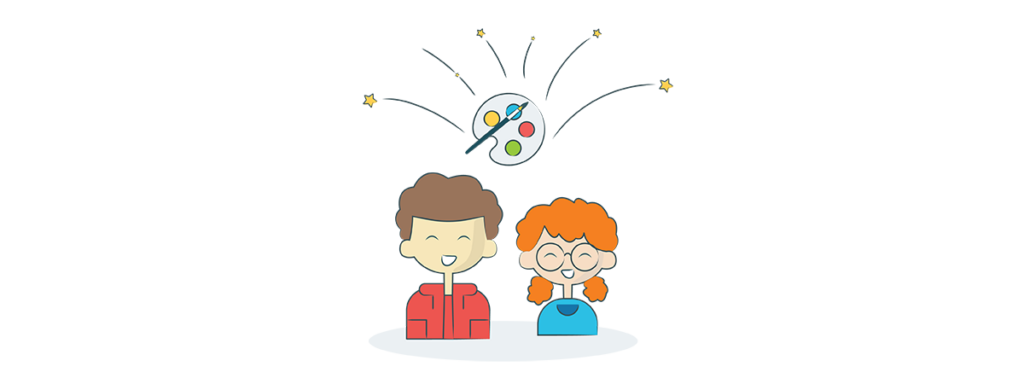

As we cultivate creativity and passion in our students, here are two PRO Packs to take your practice to the next level:
Don’t forget—you can read the full results for yourself by downloading this year’s report here and the previous years’ here (2021, 2020, 2019, 2018).
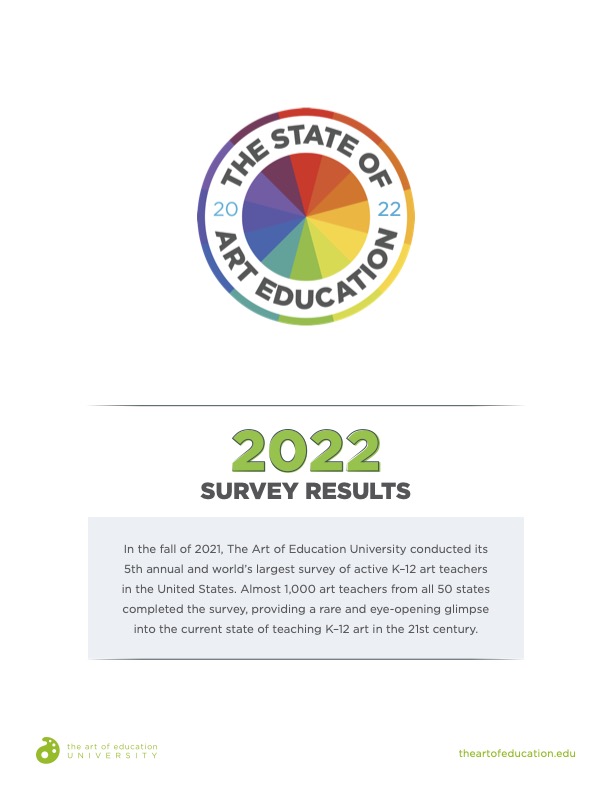


These ten key takeaways show us that we still love what we do and have the best job ever. Despite that, art teachers are facing challenges from lack of time to lack of support. These areas are preventing you from doing your jobs to the utmost of your ability and are rapidly burning art teachers out. While we can’t fix these problems, we can equip you with what you need to make positive changes to advocate for your job, program, and relevant professional development. Thank YOU for taking the time to do this survey—as an organization for art teachers, by art teachers, we need you. We look forward to using the survey results to better serve you in the year ahead. Keep creating, keep teaching, and keep sharing!
What findings surprised you the most?
Which resources or next steps are you excited to look into?
Follow us on social media (Facebook, Instagram, YouTube, Twitter, and Pinterest) for updates, announcements, and more daily doses of art education-specific PD for art teachers, by art teachers!
Magazine articles and podcasts are opinions of professional education contributors and do not necessarily represent the position of the Art of Education University (AOEU) or its academic offerings. Contributors use terms in the way they are most often talked about in the scope of their educational experiences.
